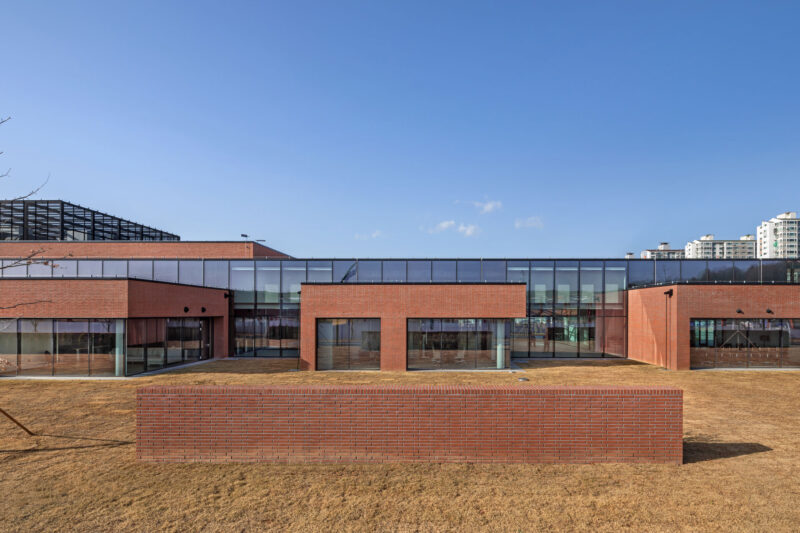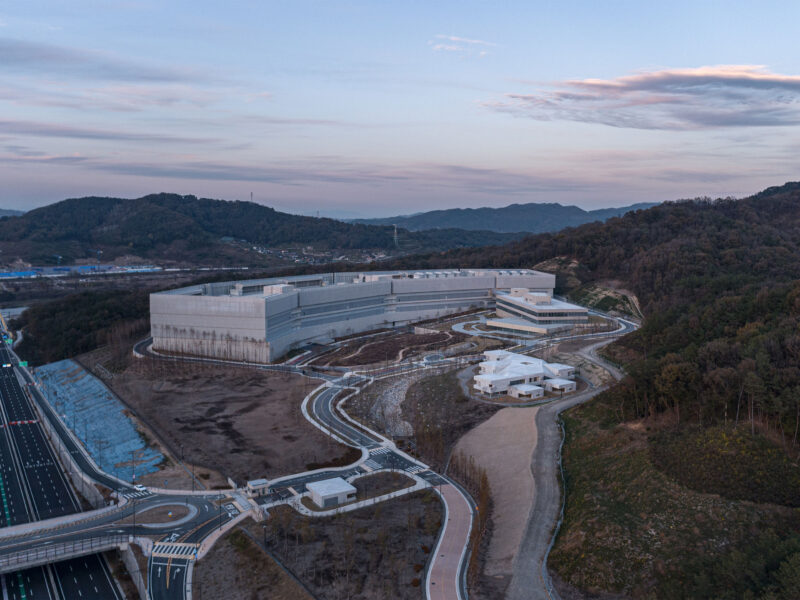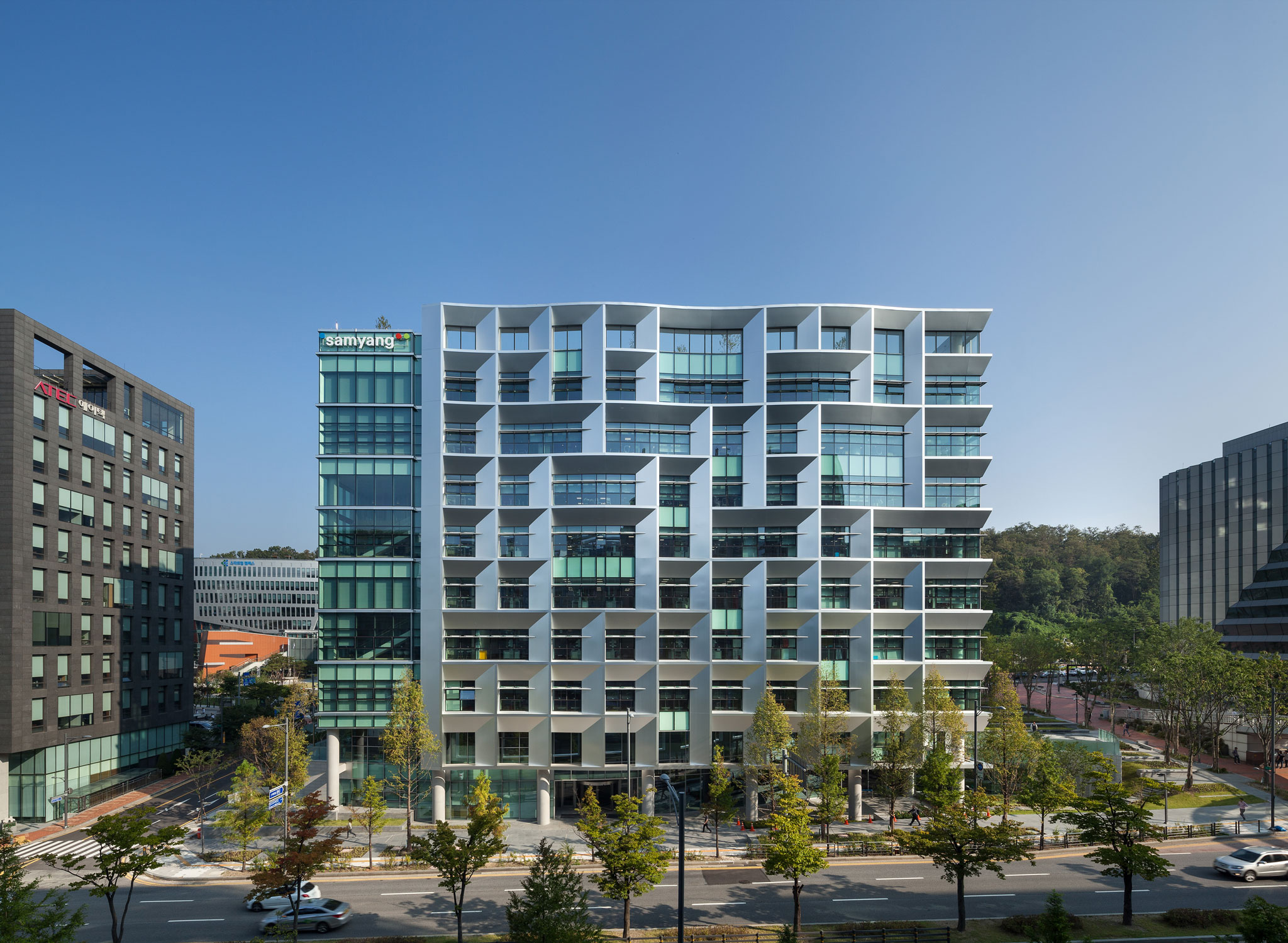
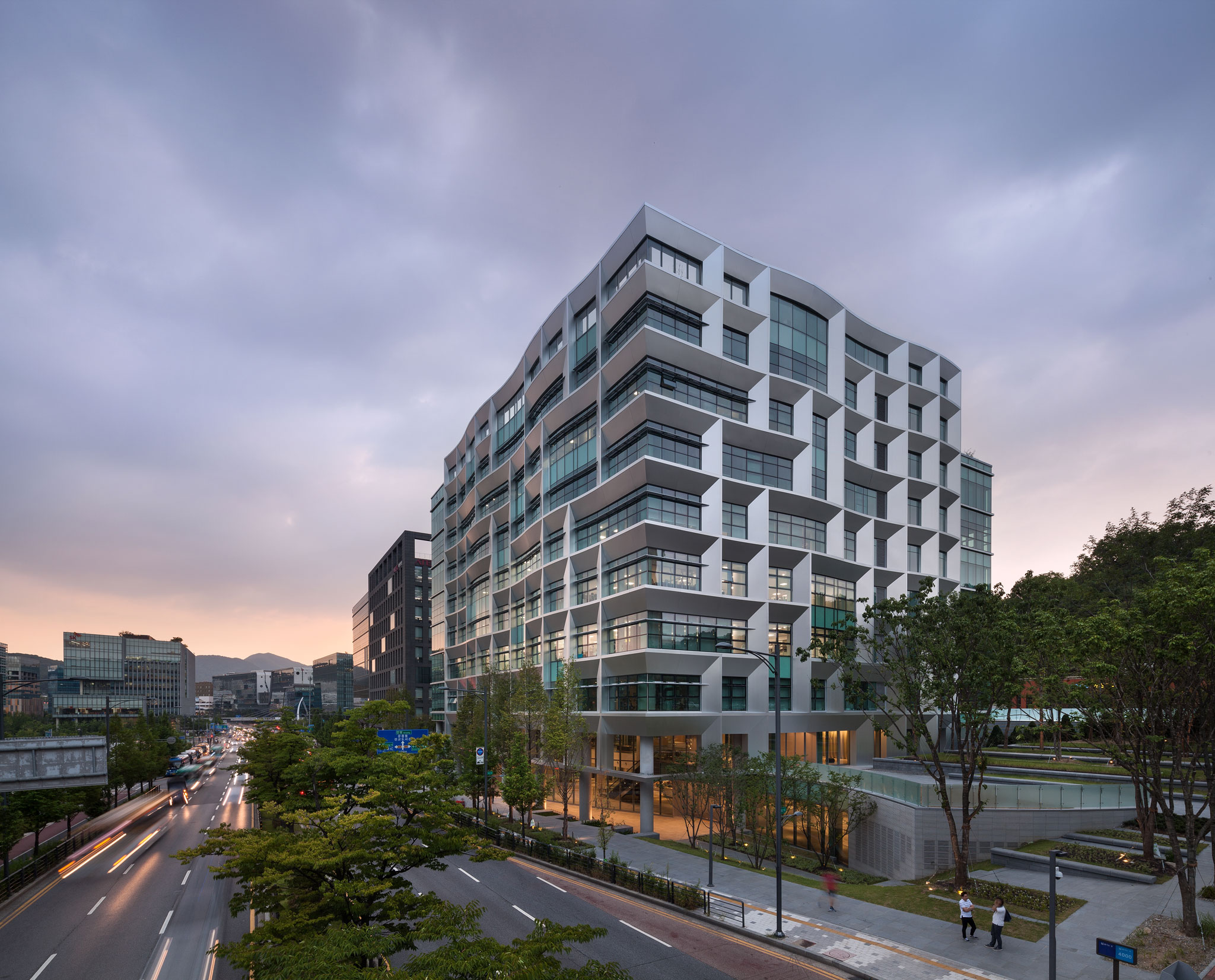
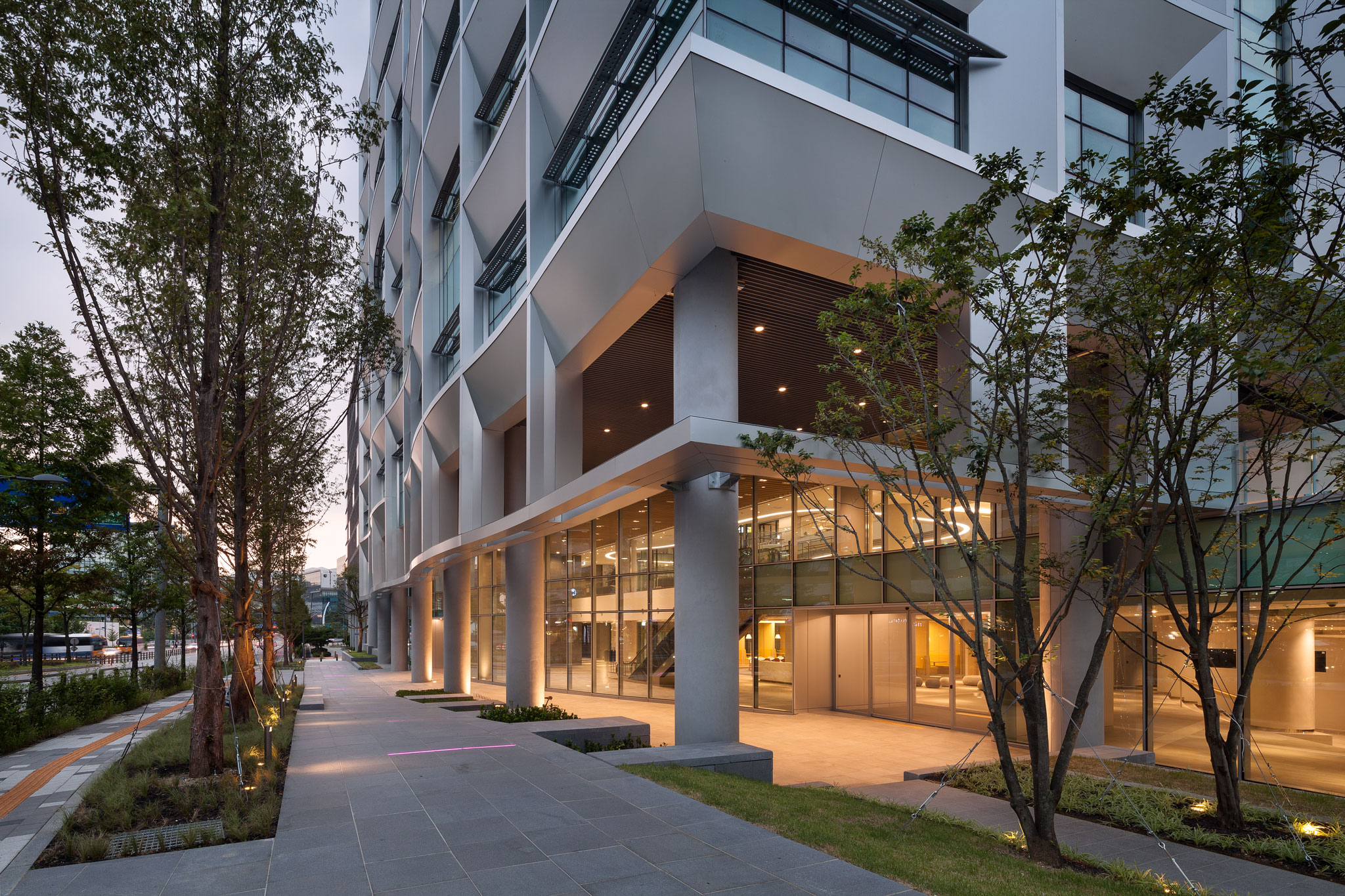


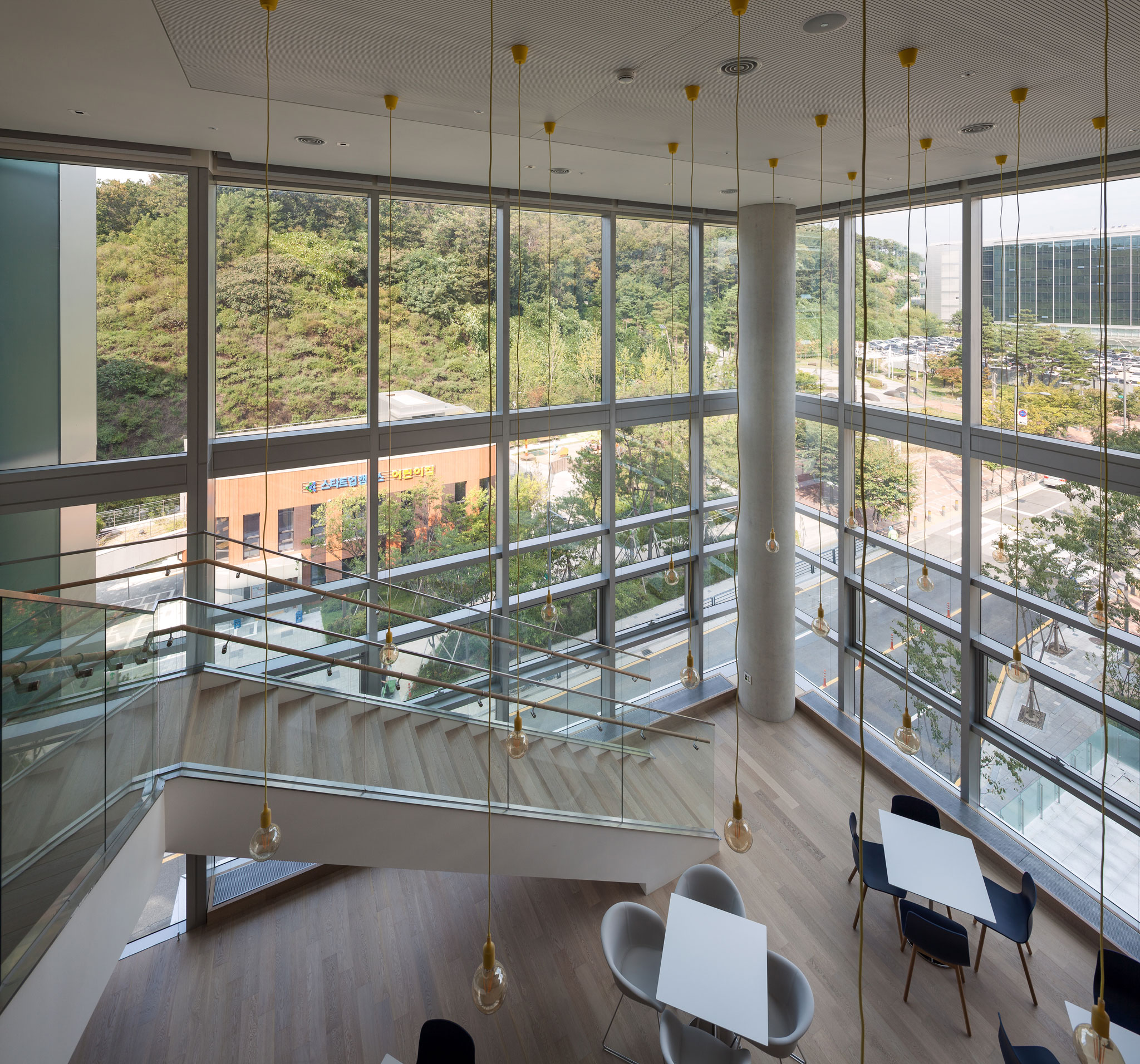

Located in Pangyo Techno Valley, the Samyang Discovery Center is a research facility for a pharmaceutical and bio company, designed to provide a pleasant work environment for researchers while maintaining strong connectivity with the local community. The architectural challenge was to fulfill the facility’s research functions flawlessly while exploring how architecture could enable public engagement in Pangyo Techno Valley, where many of Korea’s leading bio and chemical research institutes are clustered. By opening part of the site as a public space connected to pedestrian pathways and introducing piloti spaces, the design creates an environment where pedestrians can pause and relax. Inside, workspaces are arranged around a central atrium to bring in daylight and encourage visual interaction among users.
The façade design embodies Samyang’s corporate philosophy through a modern reinterpretation of architectural tradition, rooted in a reflection on sustainability rather than mere ornamentation. Subtle variations in the angles and dimensions of the double-skin façade contribute not only to the building’s external form but also to the spatial organization of the plan. The lower levels incorporate lounge and cultural spaces to enhance usability, while the research zones are arranged around the atrium, with a sequence of shared corridors, support facilities, and research facilities that foster creative work and flexible communication among researchers.
Article
-
Status
Completed
-
Awards
- 2017 the Korea Green Architectural Grand Prize
-
Client
Samyang Biopharm
-
Program
R&D, Office
-
Design Year
2012
-
Completion Year
2016
-
Location
Seongnam-si, Gyeonggi-do
-
Site area
5,732.90m2
-
Gross Floor Area
44,984.63m2
-
Building Area
3,106.82m2
-
Number of Levels
B6, 9F
-
Partner
NIKKEN SEKKEI LTD






Located in Pangyo Techno Valley, the Samyang Discovery Center is a research facility for a pharmaceutical and bio company, designed to provide a pleasant work environment for researchers while maintaining strong connectivity with the local community. The architectural challenge was to fulfill the facility’s research functions flawlessly while exploring how architecture could enable public engagement in Pangyo Techno Valley, where many of Korea’s leading bio and chemical research institutes are clustered. By opening part of the site as a public space connected to pedestrian pathways and introducing piloti spaces, the design creates an environment where pedestrians can pause and relax. Inside, workspaces are arranged around a central atrium to bring in daylight and encourage visual interaction among users.
The façade design embodies Samyang’s corporate philosophy through a modern reinterpretation of architectural tradition, rooted in a reflection on sustainability rather than mere ornamentation. Subtle variations in the angles and dimensions of the double-skin façade contribute not only to the building’s external form but also to the spatial organization of the plan. The lower levels incorporate lounge and cultural spaces to enhance usability, while the research zones are arranged around the atrium, with a sequence of shared corridors, support facilities, and research facilities that foster creative work and flexible communication among researchers.


